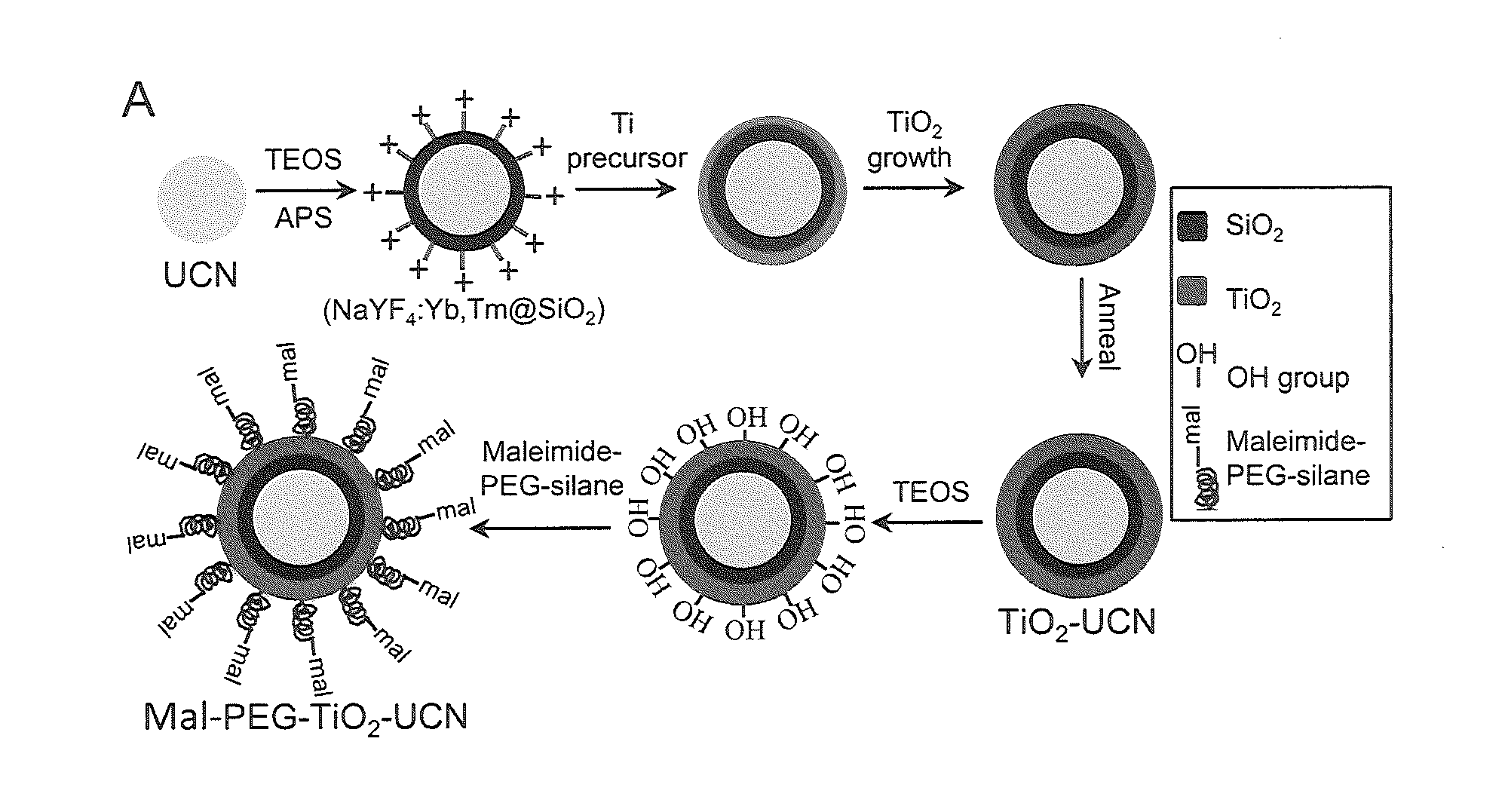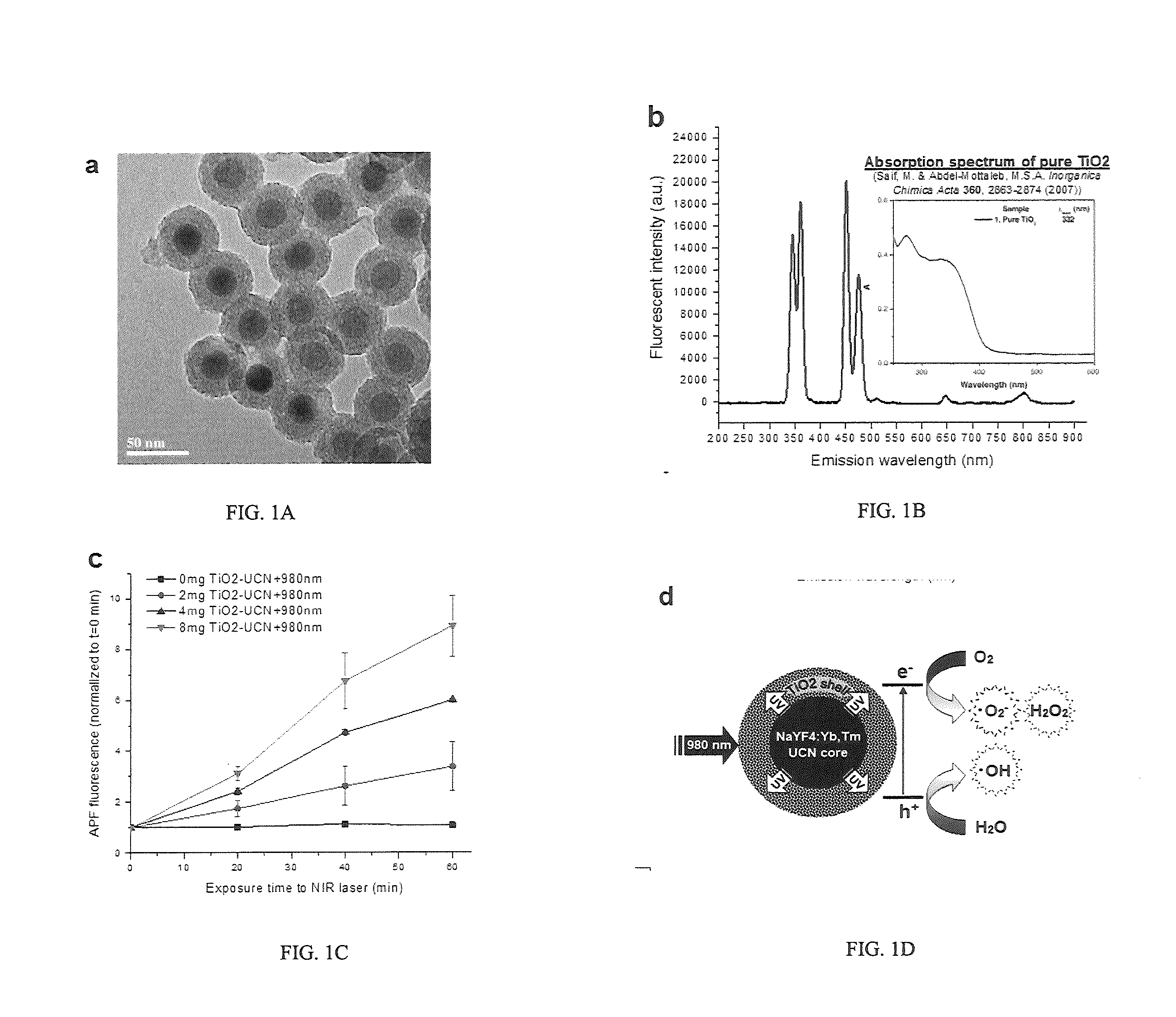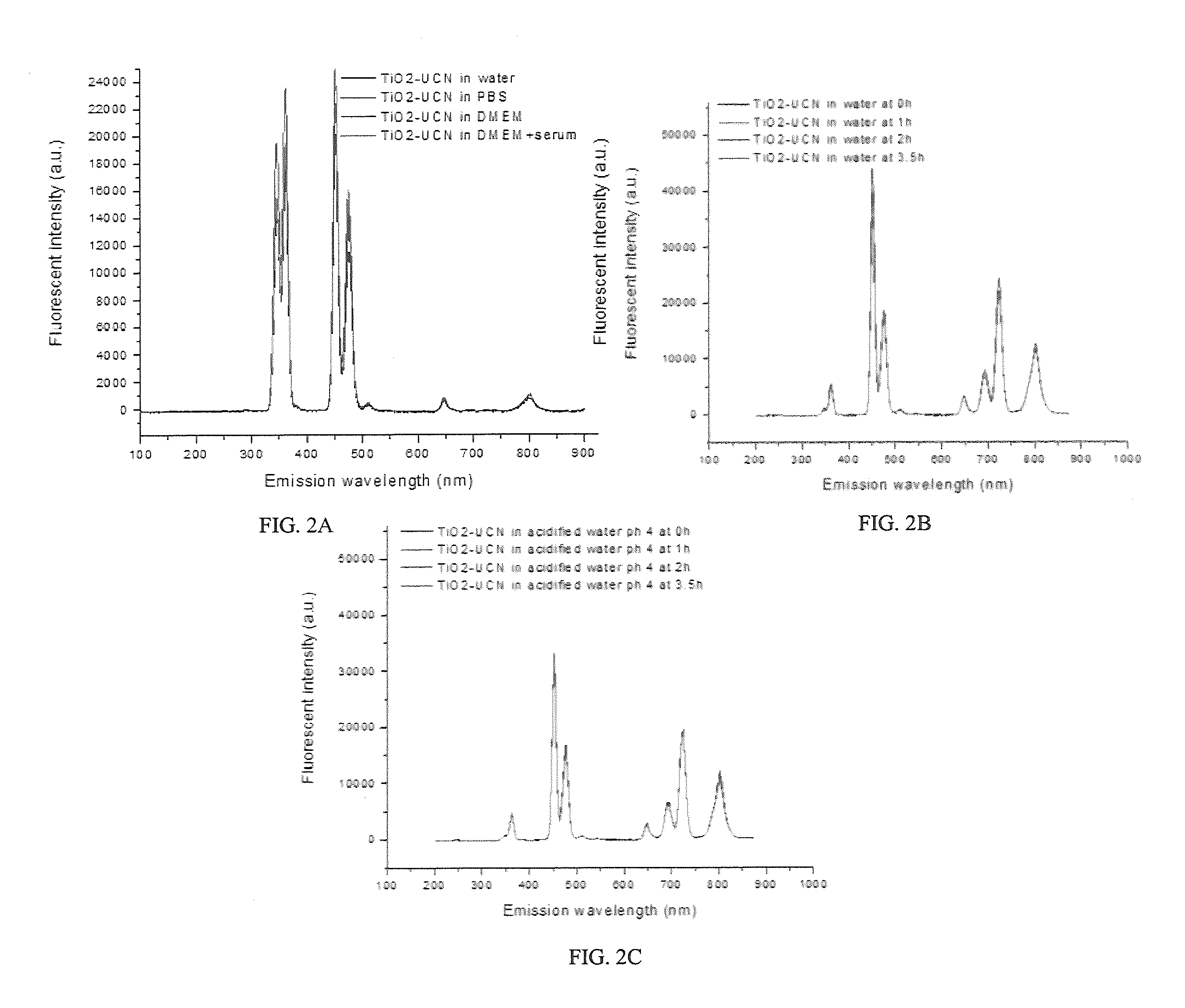Uniform core-shell tio2 coated upconversion nanoparticles and use thereof
a technology of upconversion nanoparticles and core shells, which is applied in the direction of microcapsules, drug compositions, and treatments, can solve the problems of limited conventional pdt and organ tumor thickness much greater than the depth of penetration
- Summary
- Abstract
- Description
- Claims
- Application Information
AI Technical Summary
Problems solved by technology
Method used
Image
Examples
example 1
Synthesis of Upconversion Nanoparticles
[0087]NaYF4:20% Yb, 0.5% Tm nanocrystals were synthesized as follows: YCl3 (0.8 mmol), YbCl3 (0.2 mmol) and TmCl3 (0.005 mmol) were mixed with 6 mL oleic acid and 15 mL octadecene (ODE) in a 50 mL flask. The solution was heated to 160° C. to form a homogeneous solution, and then cooled down to room temperature. 10 mL of methanol solution containing NaOH (2.5 mmol) and NH4F (4 mmol) was slowly added into the flask and stirred for 30 minutes. Subsequently, the solution was slowly heated to remove methanol, degassed at 100° C. for 10 minutes, and then heated to 300° C. and maintained for 1 h under Argon protection. After the solution was cooled naturally, nanocrystals were precipitated from the solution with ethanol, and washed with ethanol / water (1:1 v / v) for three times. 0.1 mL CO-520, 6 mL cyclohexane and 4 mL 0.01 M NaYF4 nanosphere solution in cyclohexane were mixed and stirred for 10 min. Then 0.4 mL IGEPAL CO-520 (Polyoxyethylene (5) nonylp...
example 2
Coating of TiO2 on Upconversion Nanoparticles
[0088]For further coating of an amorphous TiO2 layer, the silica surface was modified with amino groups through grafting (3-aminopropyl)-trimethoxysilane (APS) on the NaYF4@SiO2 nanoparticles. In a typical synthesis of NaYN@TiO2 nanostructures, 0.02 mmol NaYF4@SiO2 nanoparticles was dispersed in 10 mL isopropanol (IPA), 0.3 mL ammonia (28 wt %) and 2.5 mL water. Then, 2 mL of titanium diisopropoxide bis(acetylacetonate) solution (0.001 M in isopropanol) was slowly added into the above solution and stirred for 24 h at room temperature (20° C.). Amorphous TiO2 coated nanoparticles were then collected by centrifugation and washed with IPA solution twice. To achieve a crystallized TiO2 shell, the NaYF4@TiO2 nanoparticles were treated in ethanol in a sealed autoclave at 180° C. for 24 h under an air atmosphere.
example 3
Fluorescence Spectrophotometry
[0089]Fluorescence spectra of the nanoparticles was measured with a SpectroPro 2150i spectrophotometer (Roper Scientific Acton Research, MA) equipped with a 1200 g mm−1 grating and a continuous wave (CW) 980 nm diode laser. Nanoparticles were resuspended in the respective solution of either water, phosphate buffered saline (PBS) or Dulbecco's Modified Eagle Medium (DMEM) culture medium with or without 10% fetal bovine serum supplementation, for spectrophotometer measurement.
[0090]Surface modification of TiO2—UCNs with Maleimide-PEG-silane. 4 mg maleimide-PEG-silane (Nanocs Inc., New York, USA) was dissolved in 4 ml of water, to which 4 mg of TiO2—UCN dispersed in 4 ml ethanol was added. Subsequently, 10 μl of TEOS was added and the solution was stirred at RT for 30 min. At the end of stirring, 150 ul of ammonia (28 wt %) was added drop wise to the solution and stirred for another 3 h at RT. Mal-PEG-TiO2—UCNs were then collected by centrifuging solution ...
PUM
| Property | Measurement | Unit |
|---|---|---|
| wavelength | aaaaa | aaaaa |
| molecular weight | aaaaa | aaaaa |
| a wavelength | aaaaa | aaaaa |
Abstract
Description
Claims
Application Information
 Login to View More
Login to View More - R&D
- Intellectual Property
- Life Sciences
- Materials
- Tech Scout
- Unparalleled Data Quality
- Higher Quality Content
- 60% Fewer Hallucinations
Browse by: Latest US Patents, China's latest patents, Technical Efficacy Thesaurus, Application Domain, Technology Topic, Popular Technical Reports.
© 2025 PatSnap. All rights reserved.Legal|Privacy policy|Modern Slavery Act Transparency Statement|Sitemap|About US| Contact US: help@patsnap.com



